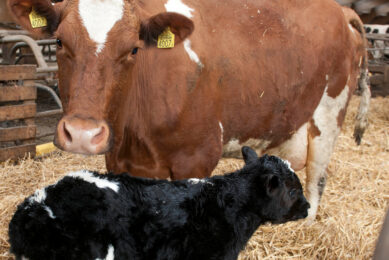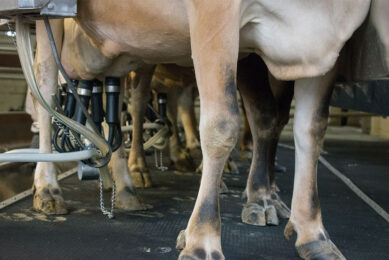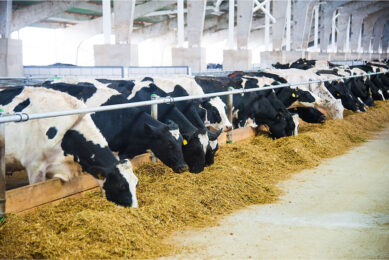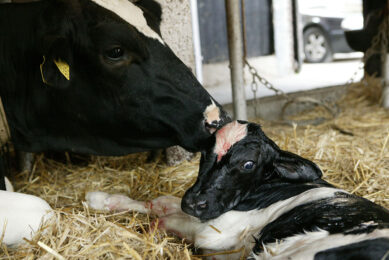How age at first calving influences productivity and fertility
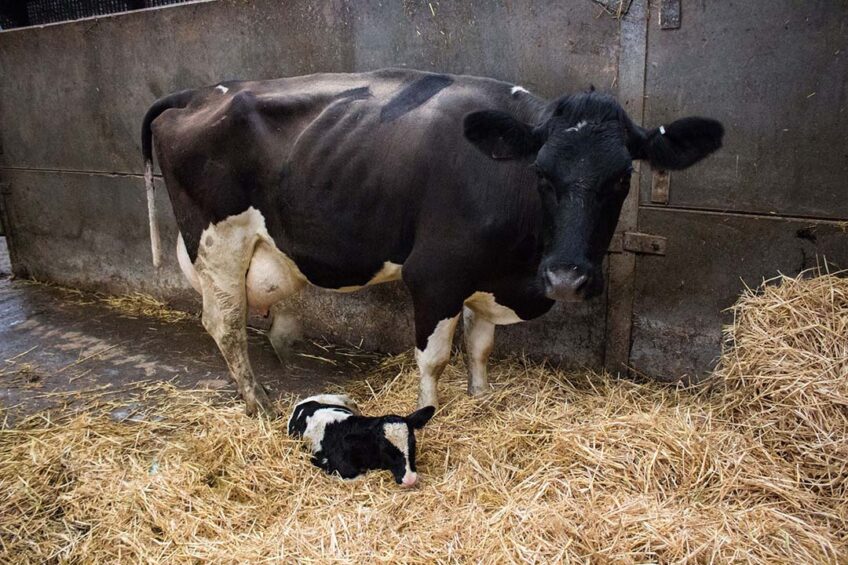
As accelerating age at first calving could result in lower rearing costs, the strategy sounds a valuable tool for sustainable dairy farming, however, the impact of a reduction in age on long-term performance remains unclear to substantiate the strategy. In this recent study, researchers from Kitasato University in Japan evaluated how age at first calving impacts milk productivity and reproductive performance up to the third lactation.
Reports show that most previous studies have focused on heifer performance during the first lactation period. On the other hand, researchers of the current study pointed out that the association between reduced age at first calving and subsequent fertility has not been fully explored. At the same time, the impact on milk production also remains controversial.
Some reports have indicated that age at first calving of less than 23 months in dairy heifers does not reduce or may even increase the first lactation yield, provided that the animals are sufficiently well grown and do not show an increased frequency of problems at calving.
According to the researchers, generally modern Holstein heifers are recommended to be bred from 15 months to calve at approximately 24 months, weighing 550-625kg. However, considerable variations in age at first calving have been reported for dairy cows. For example, the average age at first calving is 26 months in the US, 26.4 months in the UK, 28.8 months in Australia, 29.3 months in China, and 31 months in Kenya.
Age at first calving categories
In this study, longevity, fertility, and milk productivity until the end of the third lactation period were evaluated on a Holstein dairy herd differing in age at first calving (AFC) and categorised into young, moderate, old, and very old with age ranges of less than 22.5; 22.5-24; 24-25.5, and more than 25.5 months, respectively.
Heifer body weight and growth
The control of body weight (BW) in heifers before the first calving is essential to avoid dystocia, which can inhibit stable milk production and compromise reproductive performance. Therefore, replacement heifers must acquire a mature frame and sufficient BW before their first calving.
In the current study, the researchers found no significant association between AFC and the occurrence of difficulty in calving. Animal weight also has a significant impact on susceptibility to hoof disorder, whereby lighter cows are generally less susceptible to laminitis and white-line disease than heavier cows. In the present study, young AFC cows had no culling reason for hoof disease, but 5-8.1% of older AFC cows were culled due to hoof disease.
The results also showed that cows in the young AFC group experienced their first calving approximately 4.2 months earlier than those in the very old AFC group (Table 1). The growth rate from birth to first calving was higher in the young and moderate AFC groups than in the old and very old groups. The researchers emphasised that although it is recommended that modern Holstein heifers first calve when weighing between 550 and 625kg, a body weight of at least 600kg before the first calving is desirable.
Longevity and lifetime productivity until the third lactation
The results of the longevity traits and lifetime milk productive performance of the 4 AFC groups are presented in Table 2. Longevity traits were measured as the proportion of cows with 3 or more calvings, and the number of parities. The maximum number of parities was set to a maximum of 3, even when the cows had 3 or more calvings. Results showed that the proportion of cows with 3 or more calvings, and the number of parities, were higher in the young AFC group than in the other AFC groups.
The researchers also assessed the reasons for culling. The main reasons were low productivity, hoof disease, udder disorders, mastitis, and reproductive disorders. There were no significant differences in the prevalence of stillbirths, incidence of severe dystocia, or reproductive performance between the AFC groups.
The survival rate (or non-culled cows) at the third calving stage was 61% in the young AFC group, which was higher than those in the moderate (42%), old (35%), and very old (33%) AFC groups. The cows that survived (non-culled) the third calving had better reproductive performance than non-surviving (culled) cows; however, no statistical difference was detected across the 4 AFC groups within each culling group.
At the end, the researchers suggested that a reduction in AFC may not be associated with poor reproductive performance. Giving an estimate of the cost benefit of accelerating age at first calving, the researchers highlighted that since the young AFC group conceived approximately 4.2 months earlier than the very old AFC group, it is expected that the rearing cost of the young AFC group in this herd could be reduced by approximately 48,000 yen (US$308) compared to the very old AFC group.
What was distinct is that only in the young AFC group, no cows were culled because of low productivity and hoof disease from the first to the third lactation, compared to the other groups. This corresponded with the observed higher overall lifetime milk yield in the young AFC cows (Table 2). The non-productive period of the young AFC cows was not significantly different from the rest groups.
The researchers stated: “Although previous studies focusing on the first lactation were concerned about low milk productivity caused by reduced age at first calving, in our study, younger AFC cows maintained better milk productivity in the long term and were not culled by low milk production. Our findings suggest that Holstein heifers calving at younger ages have the potential to increase herd productivity.”
Conclusion
In conclusion, the researchers stated that age at first calving of 22.5 months could be associated with better survivability and higher overall lifetime milk yield than older age at first calving, without impairing reproductive performance. “Our results suggest that accelerating age at first calving may lead to higher dairy profitability,” they said.
This article is based on the publication ‘Association of age at first calving with longevity, milk yield, and fertility up to the third lactation in a herd of Holstein dairy cows in Japan’, Journal of Reproduction and Development, Vol. 69, No 6, 2023.



